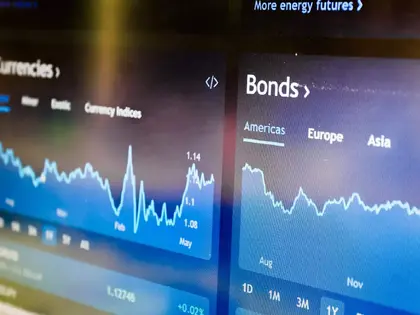Bonds: Foreigners Renew Investments in Local-Currency Debt
Foreigners have resumed investments in government Hryvnia-denominated securities, but in very small volumes.
JOIN US ON TELEGRAM
Follow our coverage of the war on the @Kyivpost_official.
The secondary bond market remains segmented into military and ordinary bonds, where trading patterns are very different. There is a very large number of small deals with military bonds in local currency – last week 3,361 deals for 130m Hr. (US $3.6m); while the number of deals with ordinary securities remains small by comparison – last week 391 deals, but of a higher volume at 3.5bn Hr. (US $95.5m). These figures are close to those of the week before.
Foreigners have resumed activity in ordinary (non-military) bonds. For more than five months, they have been in a wait-and-see mode. First, they waited for an increase in interest rates, which happened after the secondary market was unblocked. Second, many investment funds have restrictions on investing in securities designated as military.
So, since secondary market trading restrictions have been lifted and non-military bonds put back on offer, non-residents have become more active. Buying new securities is a rational strategy for foreigners because they cannot repatriate funds from Ukraine until April 1, 2023. In two weeks, they increased their portfolios of local-currency bonds by 1bn Hr. to 70.5bn Hr. (US $1.9bn).
The current portfolio is still much smaller than the day prior to Russia’s invasion (74.8bn Hr. (US$2.6bn), but foreigners’ presence increases trading activity and contributes to the formation of the secondary market yield curve.
During the past week, the yields of non-military instruments on the secondary market fluctuated close to 20%. The bulk of trading was in bonds maturing this year and next with YTMs ranging from 17% to 23% and drifting back to 20%.
On the primary market, interest in military bonds fell to the lowest level during the six months of the full-scale war with Russia. The Ministry of Finance (MoF) raised only 72m Hr. (US $2m) at the auction. Demand was almost 1.2bn Hr. (US $34m), but the MoF rejected bids above 14% and up to 20%, which is close to rates in the secondary market. See details in the auction overview.
ICU view: The segmentation of the bond market will persist since foreigners wish to trade specifically in non-military bonds due to internal regulations. At the same time, only military bills are available for individuals who joined the market after Feb. 24, 2022. Therefore, activity and volumes will remain similar to those of previous weeks.
According to statements made by the MoF, we should not expect notable changes in the terms of military bonds on the primary market in the next few weeks. Also, the MoF does not plan to offer non-military government bonds at the moment.
Bonds: Eurobond market is dormant
Trade in Ukrainian Eurobonds has been inactive and prices inched up after investors agreed to defer payments.
Eurobonds rose in price by a few cents over the past week, mostly up to 23-30 cents per dollar. Only the price of the Eurobond originally due Sep. 1 of this year slid by a mere one cent to 34 cents.
The prices of VRIs increased by 1.5 cents and approached 35 cents per dollar of notional value.
ICU view: Investors are currently in no rush to sell Ukrainian Eurobonds, but, equally, they show no particular interest in buying them. We do not expect news noteworthy enough that would prompt reassessment of the fair value of Ukrainian Eurobonds any time soon. However, their price may partially increase due to general increase in appetite for emerging markets risk.
FX: Hryvnia weakening on cash market
The cash exchange rate for major currencies continues to grow even though demand is moderate.
On the cash FX market, the hryvnia weakened from UAH 38.7‒39.6/US$ to UAH 39.0‒39.9/US$ according to data from the 10 leading retail banks.
According to the National Bank of Ukraine (NBU), the interbank market is also relatively balanced such that the NBU had to sell only US$122m of hard currency and bought almost US$198m. It looks like all purchases of hard currency by the NBU are nothing but flow of funds from the MoF account into NBU reserves.
ICU view: The NBU’s moves to balance the cash FX market did not restrain the weakening of the hryvnia cash exchange rate. Demand for cash continues to exceed supply, albeit volumes are not excessively high. At the same time, a significant difference between the official and cash exchange rates is likely to activate the flow of hard currency from the non-cash to the cash segment, probably through gray channels, which may reduce pressure on the hryvnia exchange rate.
RESEARCH TEAM: Vitaliy Vavryshchuk, Alexander Martynenko, Taras Kotovych
Read the full report here.
You can also highlight the text and press Ctrl + Enter



